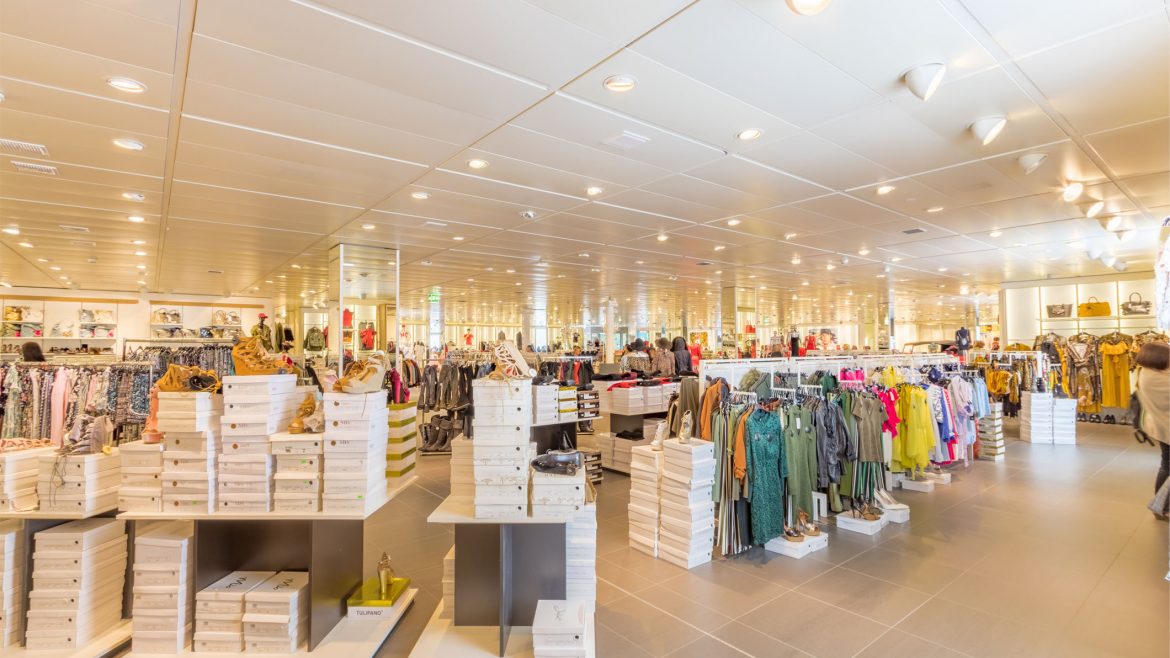With the era of smart devices and social media networks, shoppers are demanding a seamless customer experience and defining the retail industry on how it should be now? & how it will be in future. Today’s retail end customers are ahead of retailers in adopting and using mobile technologies. 75% of store shoppers use their mobile devices while shopping in stores*. So retailers are forced to make every effort to merge the digital and physical customer experience across all the available channels such as mobile, web, SMS, call center and social media.
The retail industry itself is transitioning from retail Inventory based selling to customer focused intelligent sales with a more streamlined shopping experience.This has opened the Pandora box for retailers in exploring and investing customer facing channels and realizing return on investments within a shorter time frame. Since multiple channels cannot operate on silos, it brings out a special and effective approach termed as Omnichannel. Omnichannel is a multichannel approach to sales that seeks to provide the customer with a seamless shopping experience whether the customer is shopping online from a desktop or mobile device, by telephone or in a departmental store.
It distinguishes the innovators in retail with ordinary players because omnichannel customer experience is all about true integration between channels on the front and back end of the IT systems. The future of retail belongs to those who invest and implement omnichannel strategies efficiently and effectively. This whitepaper discusses the key aspects of omnichannel retailing and best practices in which it should be prioritized and implemented.
Future of Retail Omni channel Unique customer Engagement
Omnichannel if implemented correct can provide a number of benefits for retailers
- Opportunity to deliver enhanced business operating models
- Increased sales and improved RoI
- Improved stock management and visibility
- Seamless and unified customer experience across all channels.
Extremely eager to know how omnichannel retailing is evolving with big boys?Whether a retailer is just starting in the phenomenal path of omnichannel retailing or simply looking for ways to re-define the existing strategy, these examples should give you a better idea on how to do it right:
Story 1
Walmart has introduced an omnichannel strategy at Northwest Arkansas: A drivein pickup center for online grocery orders.
- Cross channel integration between in-store and online – Re-defining omnichannel strategy.
- Build and optimize the performance of a store network that captures a larger share of spending &satisfying a broader range of shopping occasions for a large part of the population.
- Adopt the strategy of following the trend towards the “click” enablement but the pickup center and delivery still need to be ruled by “In-store” operations.
Story 2
Crate & Barrely has identified that many shoppers have the habit of moving from web to smartphone to tablet before and after purchases. They have enabled an omnichannel value proposition – when customers are signed in, the C&B app saves their cart choices so they can access their details across multiple devices and browsers. This ensures the continuity during the shopping process.They provide:
- Seamless experience to shoppers using its wedding and gift registry.
- Unified omnichannel workflow for shoppers so that they can create and edit their registry, scan barcodes in the stores to add items, and view purchases made in real time.
Story 3
We can think of omnichannel leaders all the time that include Nordstrom, Wall greens and Cabela’s. But Macy’s has the edge over others and they are part of the elite pack in omnichannel retailing. Here’s why.My Macy’s: Macy’s localized initiatives achieved strong performance and they target millennial shoppers as part of an “extreme growth” strategy.
Omnichannel fulfillment. This is the unique ability of Macy’s to fulfill online orders both from inventory at warehouses and from stores seamlessly.
Millennial strategy. Before the holiday season Macy’s launched 13 new millennial brands and expanded 11 existing ones. The brands are aimed at two demographics – ages 13 to 22 and 19 to 30 – that are perceived as being “trend focused” and more “target oriented” than other segments.
These examples are detrimental enough to showcase that the omnichannel is here to stay and the future retailing will not be e-commerce or click or mobile. It will simply be Omni-channel Retailing.
Stages of Omnichannel Retailing
The difference between customer experience and engagement defines the stages of omnichannel enablement and retailers should understand the mind share of customers before prioritizing the outreach channels. They always think towards how well they meet their customers’ engagement expectations because customers don’t buy from channels just because they exist. Customers purchase for value and experience thanks to the unrelenting emergence of new technology with the sky high expectations of anytime, anywhere and any device access with the brand.
Phase 1: Click and Mobile Enablement / Mobile Responsive
Adopting web and mobile strategies are part of the omnichannel enablement. Since smartphone shoppers represent 4 out of 5 smartphone users, it has become imperative for retailers to offere-commerce sites with mobile responsive and mobile apps across all the platforms. In a shorter sense, web and mobile enablement is more than a norm for retailers nowadays.
Phase 2: Streamline omnichannel fulfillment and unique customer experience
Once retailers tick the mandatory boxes of web and mobile, the greater emphasis should be on implementing the right technologies and platforms to sell from all channels and streamline the order fulfillment cycle right from order placement to delivery. Major retailers including Macy’s, Walmart and Target have employed these methods with great success and smaller retailers have to adopt these initiatives with the same mindset and culture.
Phase 3: Omnichannel Analytics
Retailers definitely want to reap the benefits of omnichannel by serving their customers better. But where will they start? How will they do without proper analytics and integrated tools to gauge the customer’s mind share effectively? Analytics is the best of the lot to drive decisions to create a complete, enable a personalized dialogue across all marketing touch-points and measure results in real-time across channels.
Phase 4: Internet of Things & Innovation
“Today “is not just another day for Retailers because if they miss out today, then there won’t be any tomorrow for them. It is just not about consistency and meaningful relationship with the customer but constant innovation that drives the customer relationship management strategies to the next level. Google has kick started the innovation race with in-app and tap-to-pay purchases to cope up with increased penetration of smartphones, advances in technology, and frequent releases in IoT ( Internet of Things) products. Retailers should be ahead in the innovation cycle to provide a streamlined hassle free shopping experience and continuous engagement with the brand.
Conclusion
Every 50 years or so, retailing undergoes this kind of disruption. With the increased shoppers awareness and tech-savvy mindset, retailers go through transformation every year. As the retail space evolves, digital retailing is quickly changed into a new name: omnichannel retailing. The name reflects the fact that retailers will be able to interact with customers through countless channels websites, physical stores, kiosks, direct mail and catalogs, call centers, social media, mobile devices, gaming apps, televisions and more. Unless conventional retailers adopt an entirely new perspective—one that allows them to integrate disparate channels into a seamless and unique omnichannel experience by adopting the 4 stages of omnichannel retailing they are likely to be swept away by the fiercely competitive retail space.

